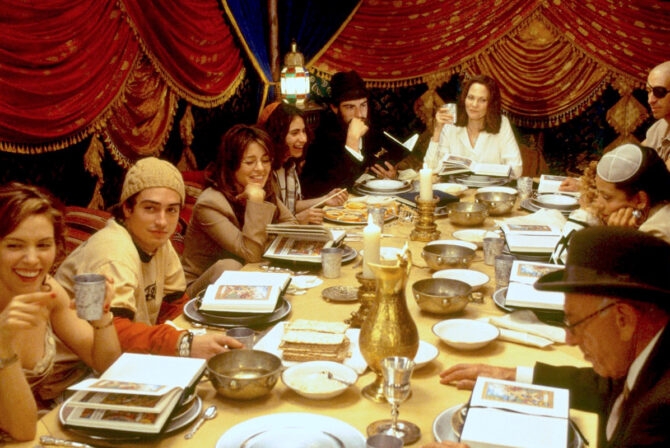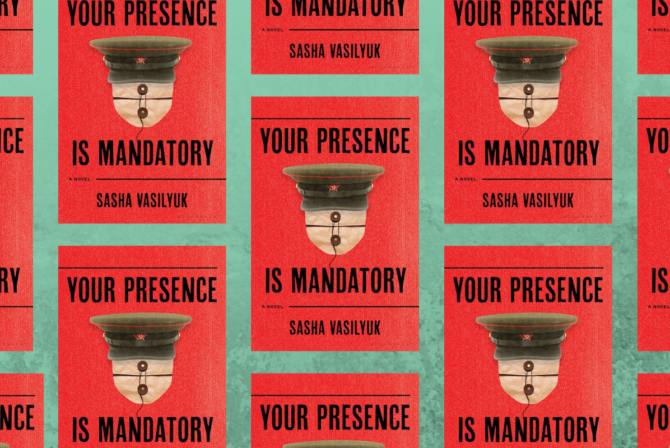Around my neck, for years, I wore a gold heart-shaped locket. Instead of a traditional photograph of a cherished friend, boyfriend, or family member, when opened, the locket had two words scrawled in pen on each tiny side: “Reb Zusha” and “10 minutes.”
There’s a Hasidic story of the great Reb Zusha of Anipol who was found crying profusely on his deathbed. “Why are you crying?” asked his disciples.
“If God asks me why I wasn’t like Moses or Maimonides,” answered Reb Zusha, “I’ll say, I wasn’t blessed with that kind of leadership ability and wisdom. But I’m afraid of another question,” continued Reb Zusha. “What if God asks, Reb Zusha, why weren’t you like Reb Zusha? Why didn’t you find your inner being and realize your inner potential? Why didn’t you find yourself? That is why I am crying.”
Touched by this story, the scrawled letters inside the locket were a desperate attempt to remind myself that I needed to do art, at the very least, for 10 minutes a day. Somehow, all my time as a young single woman in her 20s was used up attempting to succeed in the workplace, leaving no time for artistic urges. My deep conviction that I had an artistic power began at the age of 16, when for the first time, an art teacher taught me that my messier, intense style and approach was indeed beautiful. He was the reason I continued on to pursue a painting degree.
Despite the gold-ringed reminder around my neck years later, I somehow forgot to commit a few minutes a day to what I was convinced was my divine mission.
As I lit the candles every Friday night, when the noise of everyday pressures would lower around me, my life’s holes and failings became crystal clear. How could I have forgotten again, I wondered, frustrated, fingering the gold chain around my neck, realizing with shame that between the chores and demands of everyday life, the exciting and important bubbling world of making art had once more fallen below the radar. Over Shabbat, reinvigorated with quiet clarity and conviction, my priorities would realign, only to slip from consciousness once a new week began.
Perhaps this cycle would never have been broken had a friend not slipped me the book “The Artist’s Way” by Julia Cameron as she was clearing out her library before a big move. “Recover your creative self,” it promised. A few months later when I finally flipped through it, Cameron’s assertions and artistic vision shocked me, resonating deeply with my own experiences.
The most powerful message she emphasized for me was the extent to which an artist unknowingly avoids making art. An artist, she insists, uses addictive behaviors and develops complex psychological issues in a sense to avoid their divine mission of creating. As a deep sufferer of anxiety which indeed did eat up a lot of my time and mental energy, her proposal that making art would lower my anxiety was enticing. I began Cameron’s methods and exercises.
Did they work? 100%. Was she right? Absolutely. Not only did my anxiety tremendously lessen to the point that after a while I no longer needed medication, my art career finally began to gain more momentum.
A husband, two children, and two across-the-world moves later, my life’s everyday tasks have altered completely. When I became a mother, suddenly thrust into a world in which I needed to think about everyone else’s needs constantly, my inner self wilted. What did I think about life, what did I want, what were my dreams and goals and visions?
More than ever, I found I needed to write and create everyday so that my inner self wouldn’t smolder up in confusion and frustration. When I don’t allow my inner self, my inner artist, to talk and create, it’s not pretty. Which is definitely why my husband is a gung-ho activist for spending his hard-earned money on a babysitter so that I can have a few hours a week in order to make art.
It’s not easy for a mother to give to herself. But it’s imperative that a mother give to herself. I find I am most confident in my mothering, and my children are calmest, when my mind is half in reality and half involved with my newest painting or story cooking in my brain.
I have met many mother artists throughout the years who also have a deep pining to create. Yet, the guilt of using their family money on babysitters for something so “impractical,” or the colossal yet misguided feeling that, “I don’t have any time for that, I’ll wait 20 years until the children are older,” have prevented them from taking the next step. So I began working on another dream, of creating a community of mother artists, who support one another through the all-important task of making art. A community that funded these hardworking mothers so that they could fit creating into their busy and penny-pinching lives.
That artistic community is becoming a reality. A few weeks ago, I selected 12 Jewish mother artists through an application process. A week later, we launched our crowdfunding campaign to raise $15,000 for half a year of work, giving each mother five hours per week of uninterrupted time to create her art. More mothers have since signed onto the program, committing to the requirements and being placed on a waiting list for funding. The program is called “Amalia,” which is Hebrew for “work of God.” Because art isn’t just a cute thing to do; for serious mother artists, it is a divine responsibility.
My gold-plated necklace was forgotten at my parents’ home years ago, but Reb Zusha’s message finally moved from my heart into concrete action. I don’t need its reminders anymore.
Like this post? Get the best of Kveller delivered straight to your inbox.







